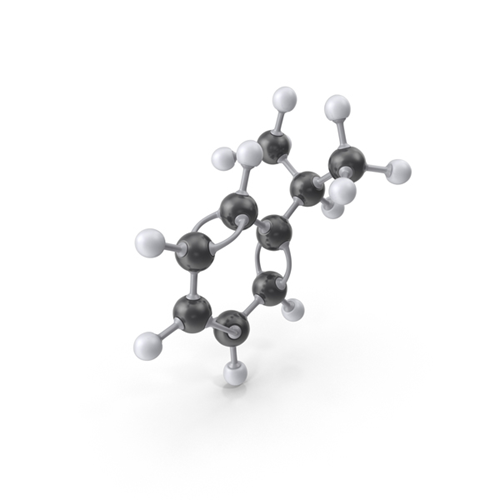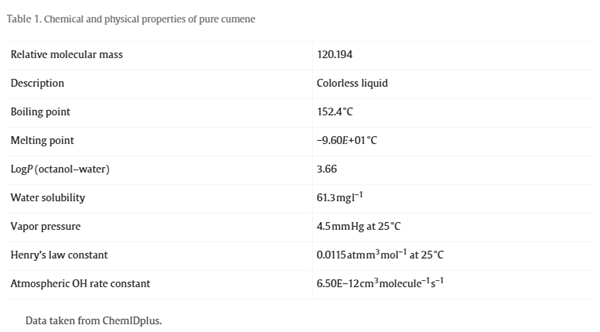Cumene: Physicochemical properties, Oxidation Mechanism and Uses
Aug 9,2024
Physicochemical properties
Cumene, also known as isopropylbenzene or 1-methylbenzene, is a flammable, volatile, colourless liquid with an odour similar to petrol. It is insoluble in water, but soluble in alcohol and many other organic solvents. Cumene is produced by the alkylation of benzene with propylene, a natural component of crude oil. It is commonly found in cigarette smoke and in plants in the natural environment. Its structure (Figure 1) and basic physical and chemical properties (Table 1) are:


Oxidation Mechanism
It is shown that [Bmim]OH can effectively accelerate the oxidation reaction rate of cumene and improve the conversion of cumene. The mechanism of the oxidation reaction of cumene catalysed by molecular oxygen activated [Bmim]OH has been reported. The nature of catalytic action and catalytic active sites of [Bmim]OH ionic liquids were also proposed.
The [Bmim]OH carbine-water structure plays an obvious catalytic role in the oxidation of cumene, which can induce the OO homolytic cleavage in cumyl hydroperoxide (CHP), leading to the formation of cumylhydroxy radicals (RO•) and carbene-OH radical-like intermediates, both of which are beneficial to the reactant with H of benzylic CH bond to accelerate the formation of cumyl radicals, involving in the propagation reaction that resulting in the formation of hydroperoxide and increasing the conversion of cumene. The overall reaction rate control step is the OO activation of CHP by [Bmim]OH carbine-water structure, which needs to overcome the energy barrier of 20.2 kcal/mol, lower than the auto-decomposition reaction energy barrier of CHP.
Uses of Cumene
Cumene is mainly used as an intermediate in the production of phenol and acetone. It is also used in the manufacture of styrene, a-methylstyrene and acetophenone. In addition, isopropylbenzene is used as a thinner for paints, lacquers and enamels. However, Cumene is irritating to the eyes and skin. Prolonged skin contact may result in dryness, desquamation and rashes. Exposure to vapour concentrations may result in central nervous system depression manifested by dizziness, slight incoordination and loss of consciousness.
- Related articles
- Related Qustion
- Cumene-Mechanism of toxicity Jan 12, 2022
Cumene is a common name for isopropylbenzene, an organic compound. Cumene is a volatile colorless liquid at room temperature with a characteristic sharp, penetrating, aromatic odor. It is insoluble in water but is soluble in alcohol and man
- Uses and Benefits of CUMENE Nov 27, 2019
Cumene, also known as isopropylbenzene, 2-phenylpropane, or (1-methylethyl) benzene, is a colorless, volatile liquid with a gasoline-like odor. It is a natural component of coal tar and crude oil, and also can be used as a blending componen
1,7-Dimethylxanthine is a naturally occurring alkaloid compound that can enhance alertness and reduce drowsiness.....
Feb 27,2025APIPyrogallol is an intestinal microbial metabolite of mango polyphenols, which is well reported for its antiproliferative activities against many types of cancers.....
Oct 21,2024API








